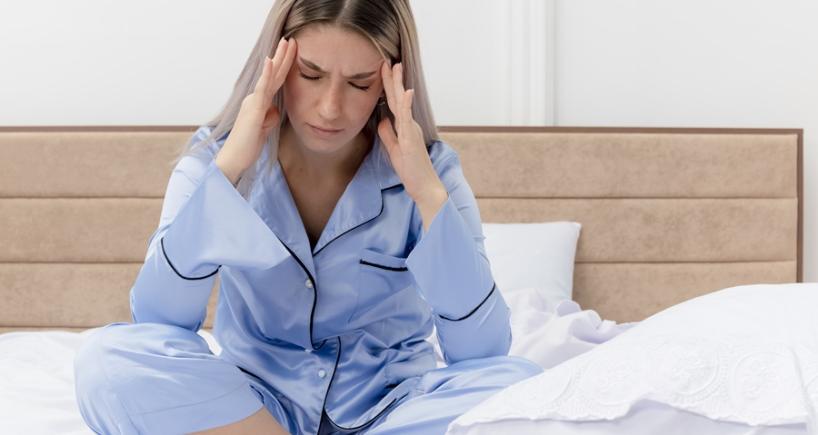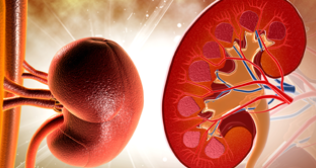
Managing Cervicogenic Headaches: Signs and Treatment Options
A headache has a relentless ability to spoil one’s day. Sometimes, people can blame their pounding head on stress, sinus issues, or a migraine. But what if a person’s headache has nothing to do with their head?
A cervicogenic headache isn’t your usual headache. It’s a neck issue that translates into head pain. Healthcare professionals call it referred pain — when you feel pain in a different site of your body other than the source of the issue. Let us understand in detail:
What exactly is cervicogenic headache (CGH)?
Cervicogenic headache is pain (perceived as happening in a body part other than its source) discerned in the head from a point of origin in the neck. Cervicogenic headache refers to a secondary headache, which means that another illness/physical problem causes it. In the instance of cervicogenic headache, the cause is a disorder of the cervical spine as well as its component bone, disc, and/or soft tissue elements. Numerous pain-sensitive structures exist in the cervical (upper neck) as well as occipital (back of the head) areas.
Signs of Cervicogenic Headache
CGH can be distinguished from other types of headaches by several vital signs:
Dull, moderate-severe intensity pain: The pain in CGH is most described as dull and less pulsation type and of moderate to critical intensity in the head and neck portion.
Reduced flexibility of neck: The pain generally commences at the back of the neck/head, which may lead to some neck stiffness as well as decreased range of motion.
Pain in more than one area: From behind the head, the pain may extend toward the front succeeding the scalp, forehead, portion surrounding the eye, temple, as well as portion around the ear.
Hazy vision in one eye: Blurring of vision may be experienced in the eye of the impacted side
Pain beneath the neck: Pain experienced in the arm, shoulder/ between the shoulder blades is also predominant.
It is possible to have CGH without experiencing neck pain. Certain times cervical joint problems may not be painful recurrently but may be tender to touch. This is also suggestive of a neck problem giving rise to headache. The frequency and duration of pain may differ every time CGH happens.
Treatment of Cervicogenic Headaches
There is no particular treatment protocol for cervicogenic headache (CGH), and a combination of distinct techniques may require to be tried to alleviate the pain.
This blog discusses some of the non-invasive treatment methods for CGH that are generally tried first.
Manual Therapy
Manual therapy comprises joint mobilization and manipulation for CGH. This method concentrates on procedures such as massage, manipulation, and/or physical therapy. Treatment with manual therapy has been depicted to offer favourable outcomes, especially when combined with exercise.1,2 Spinal manipulative therapy may relieve pain by relieving pressure on joints as well as improving nerve function. Prior to having manual therapy, it is important to eliminate any severe underlying medical conditions or neck injury to decrease the risk for serious complications.
Medication
Doctors may prescribe medications utilised for migraines, tension-type headaches /neuralgias (nerve pain) to relieve CGH pain. Few of the commonly used medicines for CGH are:
- Tri-cyclic antidepressants
- Anti-epileptic drugs
- Analgesics comprising non-steroidal anti-inflammatory drugs (NSAIDs), selective cyclooxygenase-2 (COX-2) inhibitors, as well as narcotic analgesics
- Muscle relaxants
- Botulinum toxin
While medicines alone usually do not eliminate CGH pain, it may offer enough pain relief to improve patient compliance with manual therapy or other rehabilitation programs.
Therapeutic Exercise
Neck pain resulting from imbalance of muscle, forward head postures, as well as rounded shoulders may be treated with therapeutic exercises. These exercises concentrate on strengthening as well as stretching the neck and its supporting muscles. A physical therapist/ other health professional may craft a neck exercise program specifically for the patient.
A post-isometric relaxation (PIR) technique may aid relieve muscle tightness and trigger-point pain in tense and shortened neck muscles. Physical therapists use alternate cycles of contraction and relaxation to aid relax and lengthen the muscles for an improved range of motion.
Mind-Body Therapy
If chronic pain persists despite treatments, a variety of mind-body therapies may aid with pain management:
Cognitive behavioural therapy teaches tactics for positive thinking as well as problem solving.
Biofeedback trains the mind and body to become more conscious of physiological responses that may be causing pain as well as how to manage them.
In summary, cervicogenic headaches pose a unique challenge in headache management. They arise from issues in the cervical spine rather than the head itself. Characterized by dull to severe pain that arises from the neck to various portions of the head, these headaches may also manifest with neck stiffness and decreased range of motion.
Treatment options for cervicogenic headaches often begin with non-invasive approaches. Manual therapy, Medications, Therapeutic exercises, as well as mind-body therapies help patients manage pain and improve overall well-being. Ultimately, a personalized treatment plan tailored to individual needs and symptoms is crucial for effectively managing cervicogenic headaches and restoring quality of life.
Popular Searches :
Hospitals: Cancer Hospital in Delhi | Best Heart Hospital in Delhi | Hospital in Amritsar | Hospital in Ludhiana | Hospitals in Mohali | Hospital in Faridabad | Hospitals in Gurgaon | Best Hospital in Jaipur | Hospitals in Greater Noida | Hospitals in Noida | Best Kidney Hospital in Kolkata | Best Hospital in Kolkata | Hospitals in Rajajinagar Bangalore | Hospitals in Richmond Road Bangalore | Hospitals in Nagarbhavi Bangalore | Hospital in Kalyan West | Hospitals in Mulund | Best Hospital in India | | Cardiology Hospital in India | Best Cancer Hospital in India | Best Cardiology Hospital in India | Best Oncology Hospital In India | Best Cancer Hospital in Delhi | Best Liver Transplant Hospital in India
Doctors: Dr. Rana Patir | Dr. Rajesh Benny | Dr. Rahul Bhargava | Dr. Jayant Arora | Dr. Anoop Misra | Dr. Manu Tiwari | Dr. Praveer Agarwal | Dr. Arup Ratan Dutta | Dr. Meenakshi Ahuja | Dr. Anoop Jhurani | Dr. Shivaji Basu | Dr. Subhash Jangid | Dr. Atul Mathur | Dr. Gurinder Bedi | Dr. Monika Wadhawan | Dr. Debasis Datta | Dr. Shrinivas Narayan | Dr. Praveen Gupta | Dr. Nitin Jha | Dr. Raghu Nagaraj | Dr. Ashok Seth | Dr. Sandeep Vaishya | Dr. Atul Mishra | Dr. Z S Meharwal | Dr. Ajay Bhalla | Dr. Atul Kumar Mittal | Dr. Arvind Kumar Khurana | Dr. Narayan Hulse | Dr. Samir Parikh | Dr. Amit Javed | Dr. Narayan Banerjee | Dr. Bimlesh Dhar Pandey | Dr. Arghya Chattopadhyay | Dr. G.R. Vijay Kumar | Dr Ashok Gupta | Dr. Gourdas Choudhuri | Dr. Sushrut Singh | Dr. N.C. Krishnamani | Dr. Atampreet Singh | Dr. Vivek Jawali | Dr. Sanjeev Gulati | Dr. Amite Pankaj Aggarwal | Dr. Ajay Kaul | Dr. Sunita Varma | Dr. Manoj Kumar Goel | Dr. R Muralidharan | Dr. Sushmita Roychowdhury | Dr. T.S. MAHANT | Dr. UDIPTA RAY | Dr. Aparna Jaswal | Dr. Ravul Jindal | Dr. Savyasachi Saxena | Dr. Ajay Kumar Kriplani | Dr. Nitesh Rohatgi | Dr. Anupam Jindal |
Specialties: Heart Lung Transplant | Orthopedic | Cardiology Interventional | Obstetrics & Gynaecology | Onco Radiation | Neurosurgery | Interventional Cardiology | Gastroenterologist in Jaipur | Neuro Physician | Gynecologist in Kolkata | Best Neurologist in India | Liver Transfer



















